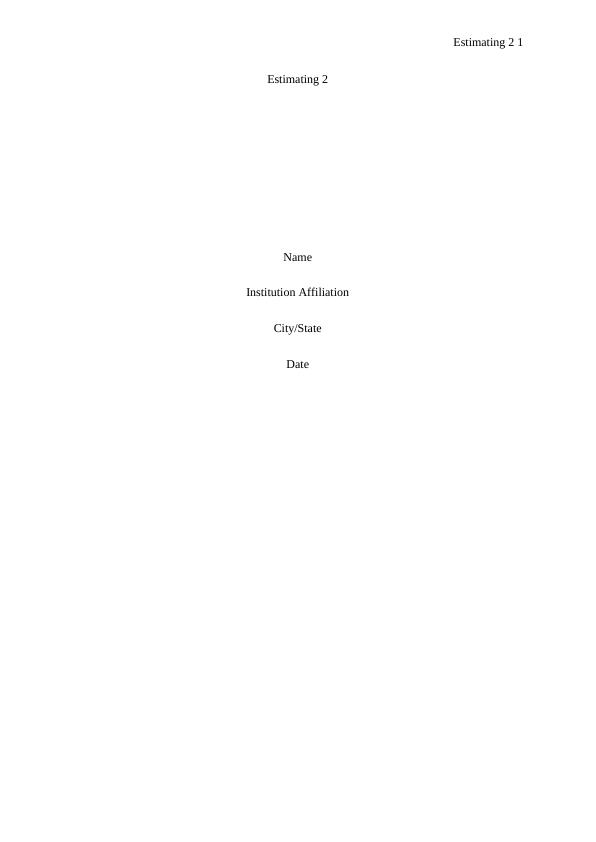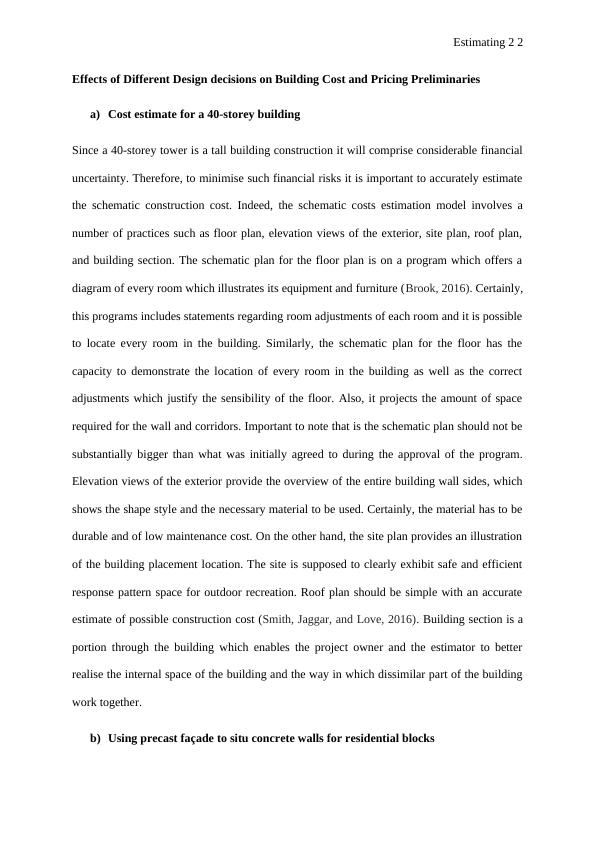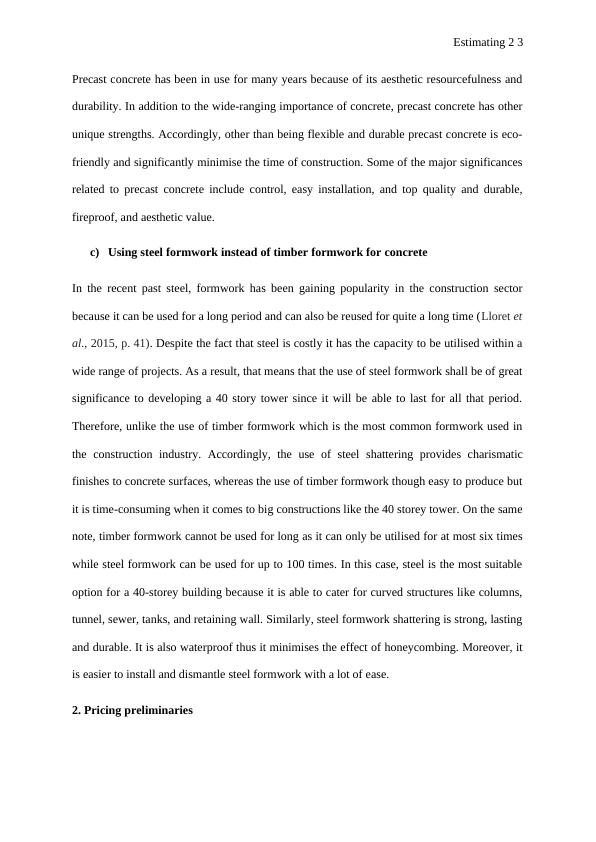Effects of Different Design Decisions on Building Cost and Pricing Preliminaries
This assignment is a research based group assignment with two major tasks. Students are expected to apply the concepts of estimating, analyze the effect of different design decisions on building cost, and explain the principles of pricing preliminaries and all-in unit rates.
7 Pages1508 Words191 Views
Added on 2023-06-03
About This Document
This article discusses the effects of different design decisions on building cost and pricing preliminaries, including cost estimation for a 40-storey building, using precast façade, and steel formwork for concrete. It also covers principles and methods for construction pricing preliminaries such as information accuracy and relevance, integrity, uncertainty and risk, validation, and release and use.
Effects of Different Design Decisions on Building Cost and Pricing Preliminaries
This assignment is a research based group assignment with two major tasks. Students are expected to apply the concepts of estimating, analyze the effect of different design decisions on building cost, and explain the principles of pricing preliminaries and all-in unit rates.
Added on 2023-06-03
ShareRelated Documents
End of preview
Want to access all the pages? Upload your documents or become a member.
Effects of Design Decisions on Building Cost and Pricing Preliminaries
|9
|897
|489
Insulated Concrete Framework: The Best Modern Method of Construction for Self-Builders
|10
|3068
|405
Construction Information: Drawing, Detailing, Specification
|13
|1459
|128
Integrated Design Project: Rephrase
|7
|1079
|142
Relationship Of The Ratio Between Longer to Shorter Span
|13
|1946
|21
Stiffened Raft Ground Slabs and Suspended Slabs for Residential Low-Rise Constructions
|14
|2525
|109



